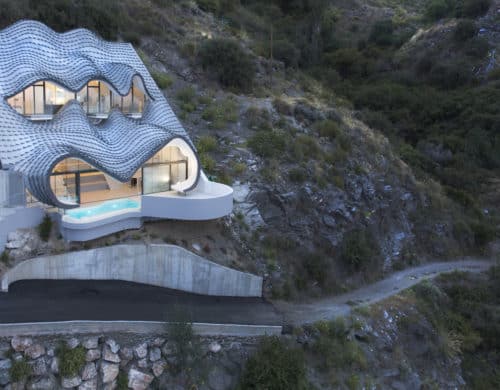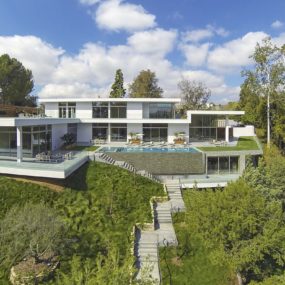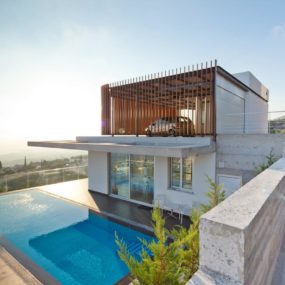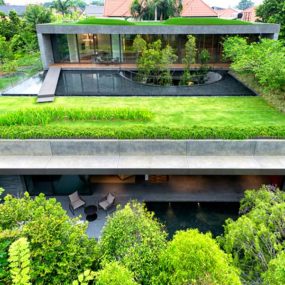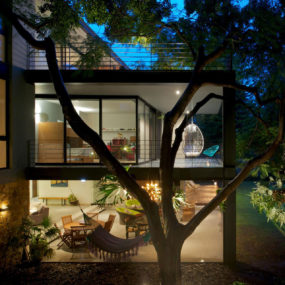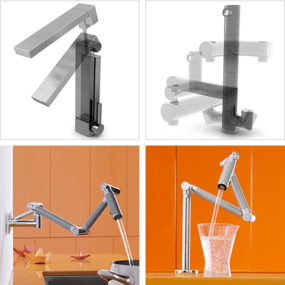
The Northwest Harbor House, located in Sag Harbor NY, USA, straddles a tidal estuary and freshwater wetlands on a site that is only 6ft above sea level. When Bates Masi + Architects took on the project for their clients, they needed to create a home that was sensitive to the environmental concerns and the local zoning restrictions. Some of the challenges they faced were with FEMA requirements to position the first floor above the base flood elevation while also staying within the limited footprint the local zoning allowed for. This meant Bates Masi + Architects worked within a predetermined scope of a 1900sqft home that was limited to a single story raised 8ft above the land surface. Nevertheless, the final result is a stunning example of residential architecture that takes advantage of the surrounding views and light corridors while at the same time incorporating a natural flow within the floor plan – including using the carport below the living volume to create walk through storage for all the homeowner’s outdoor needs.
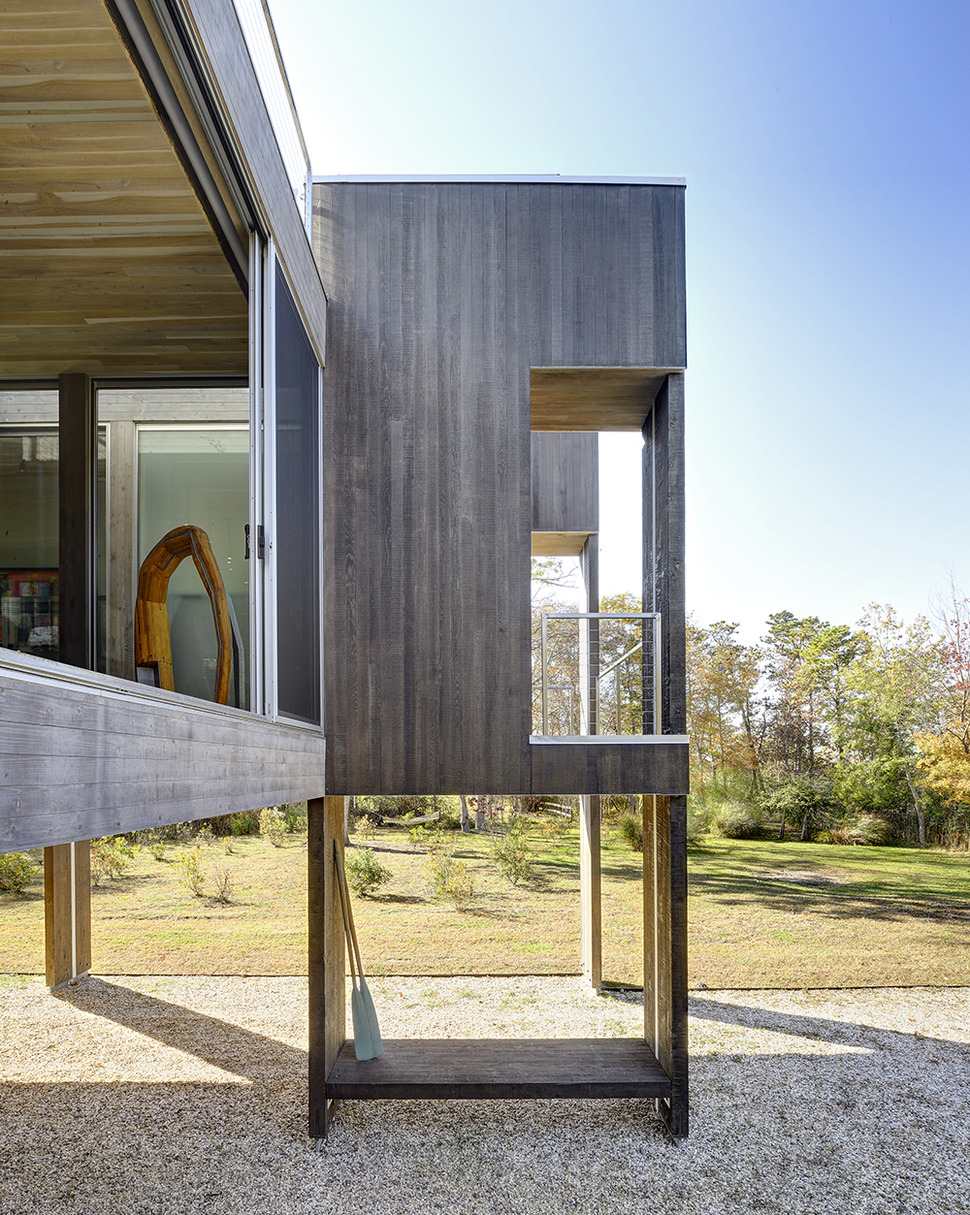
The flight of stairs on the left of the front facade leads first to the living volume before continuing on to a large rooftop deck. While at the entry level of the home, a unique abstracted wood sculpture located in the dining room is clearly visible through the large expanses of floor to ceiling glazings.

The dining room is literally surrounded on 3 sides with glazings that overlook the wetlands below. To create a continuum with the views, the architects clad both the floors and the ceilings in clear finished wood and suspended only 3 simple yet elegant pendants over the table.
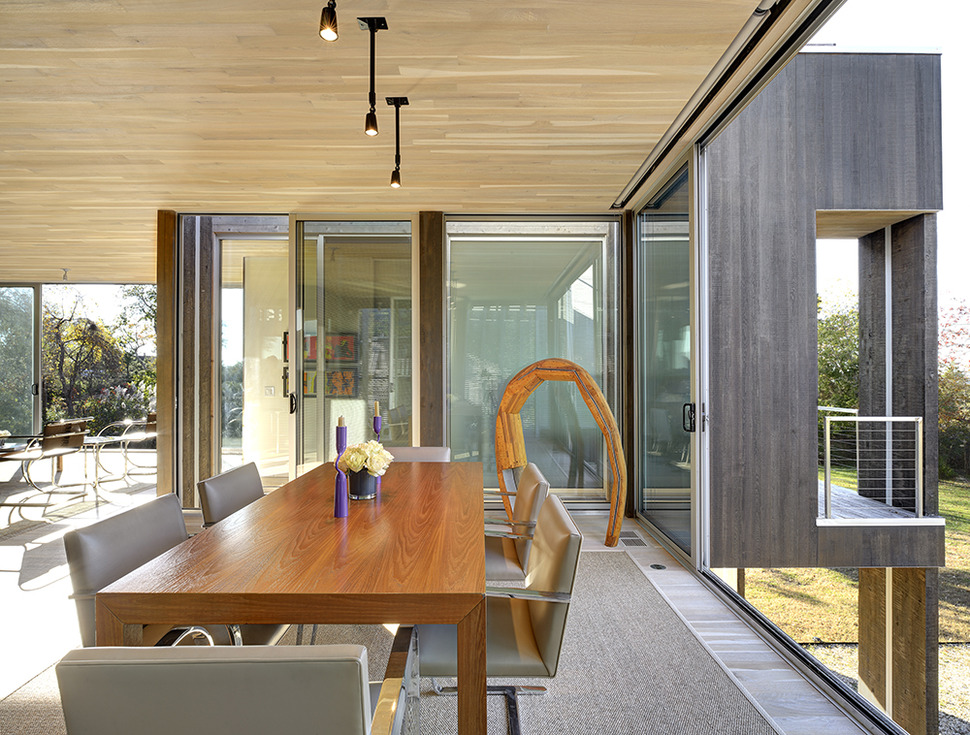
All the zones within Northwest Harbor House are arranged using an innovative structural system that infuses them with natural daylight and circulating air.
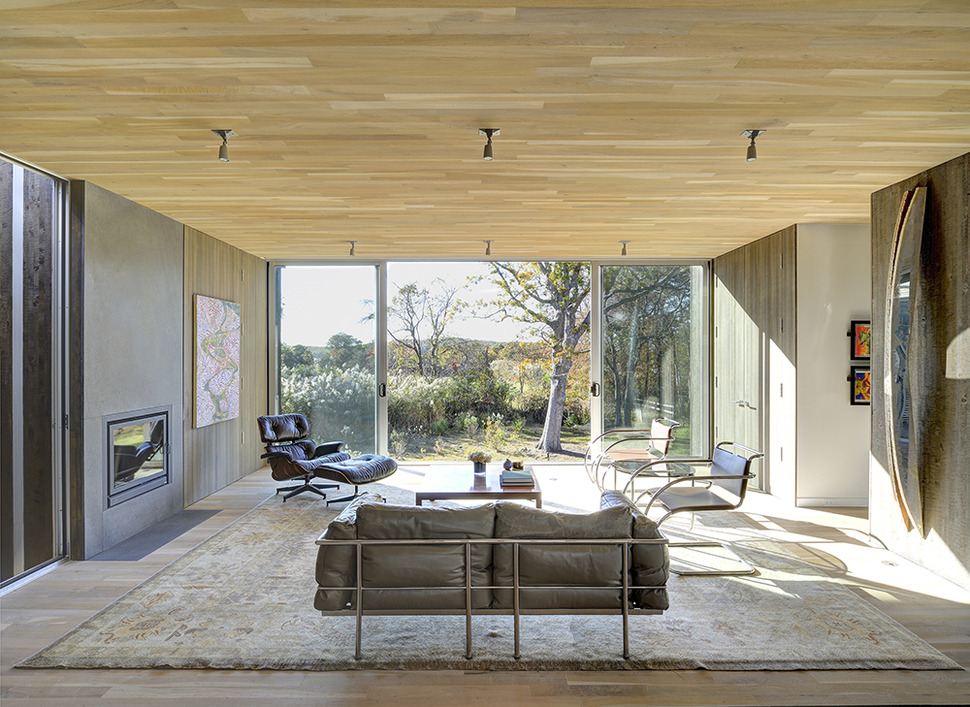
Located kitty corner to the dining room is the social zone. Here, like in the rest of the home, visual connections to the landscape create a serene environment enhanced by the choice of materials and color in the structure itself.
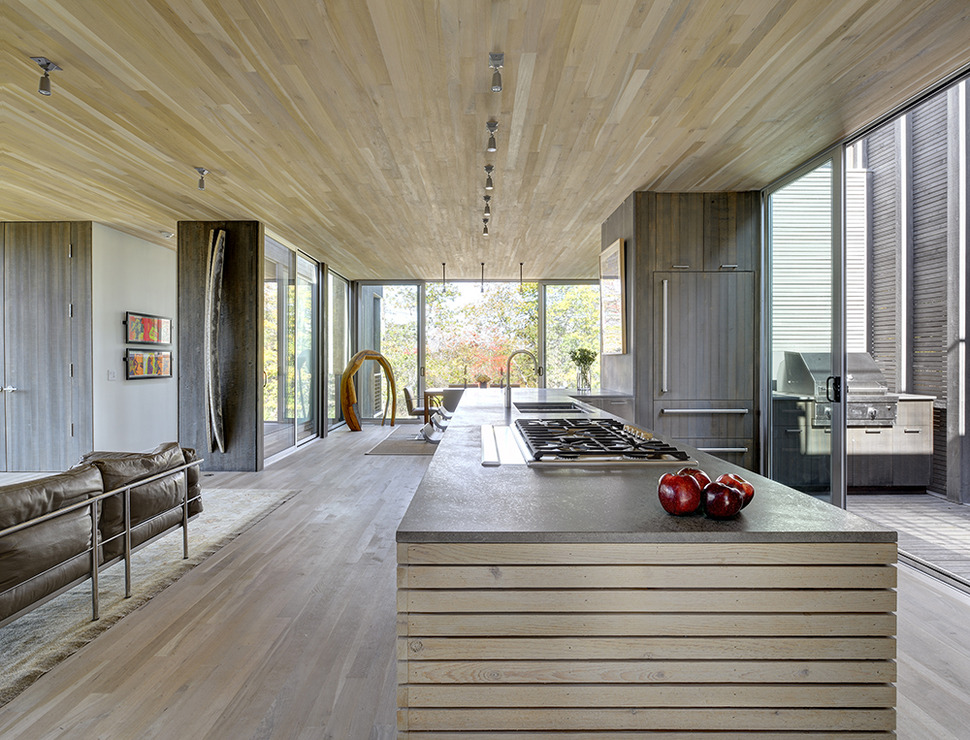
Connecting both the dining and social zones within an L formation is the floating kitchen. Here, the fridge is located – and hidden – on a bump out against the glazed exterior wall while the stove, sink and prep spaces are all positioned in the long island. Sliding panels within the glazing offer a direct connection to the BBQ area just outside.
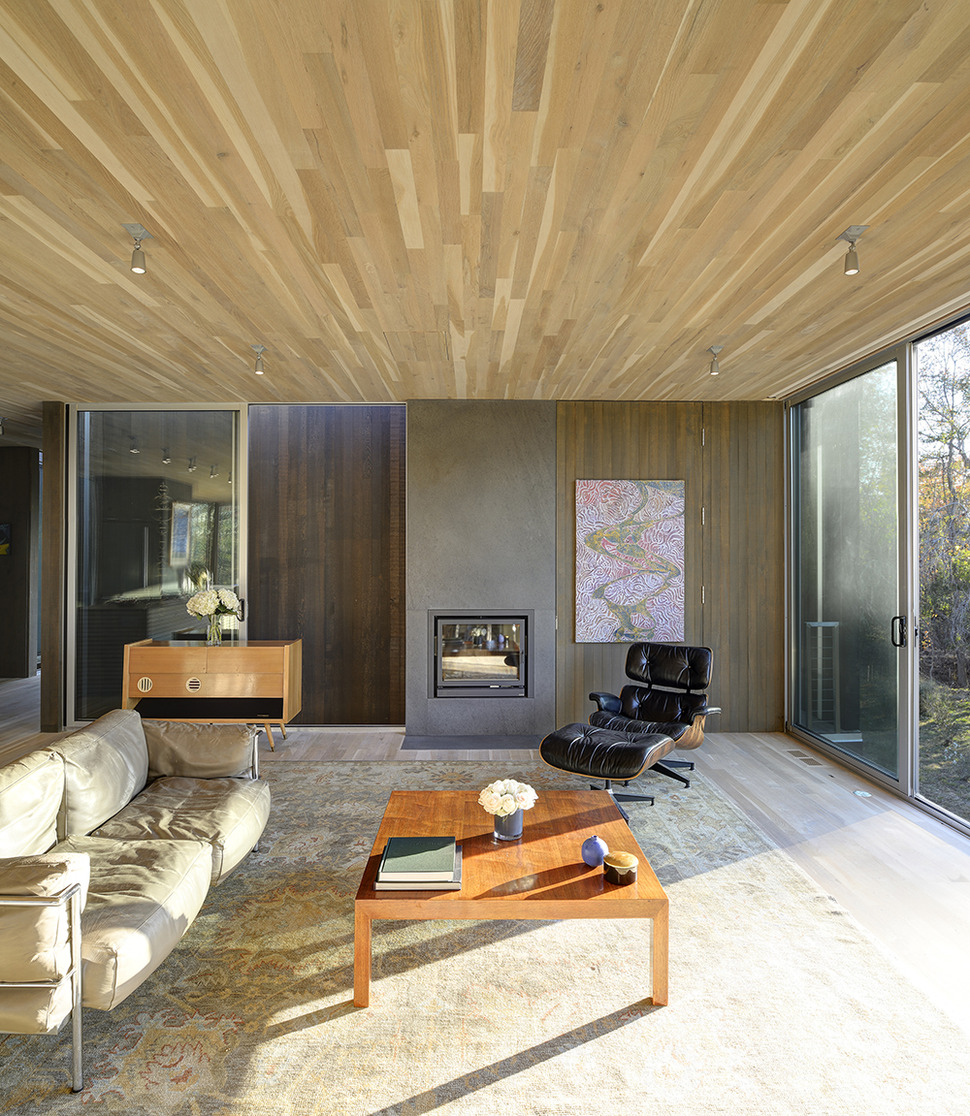
Positioned in the void of the three main social zones is a semi-private family room. Overlooking the side of the property and featuring darker, stained wood wall paneling, it is as comfortable and cozy as a cabin in the woods.
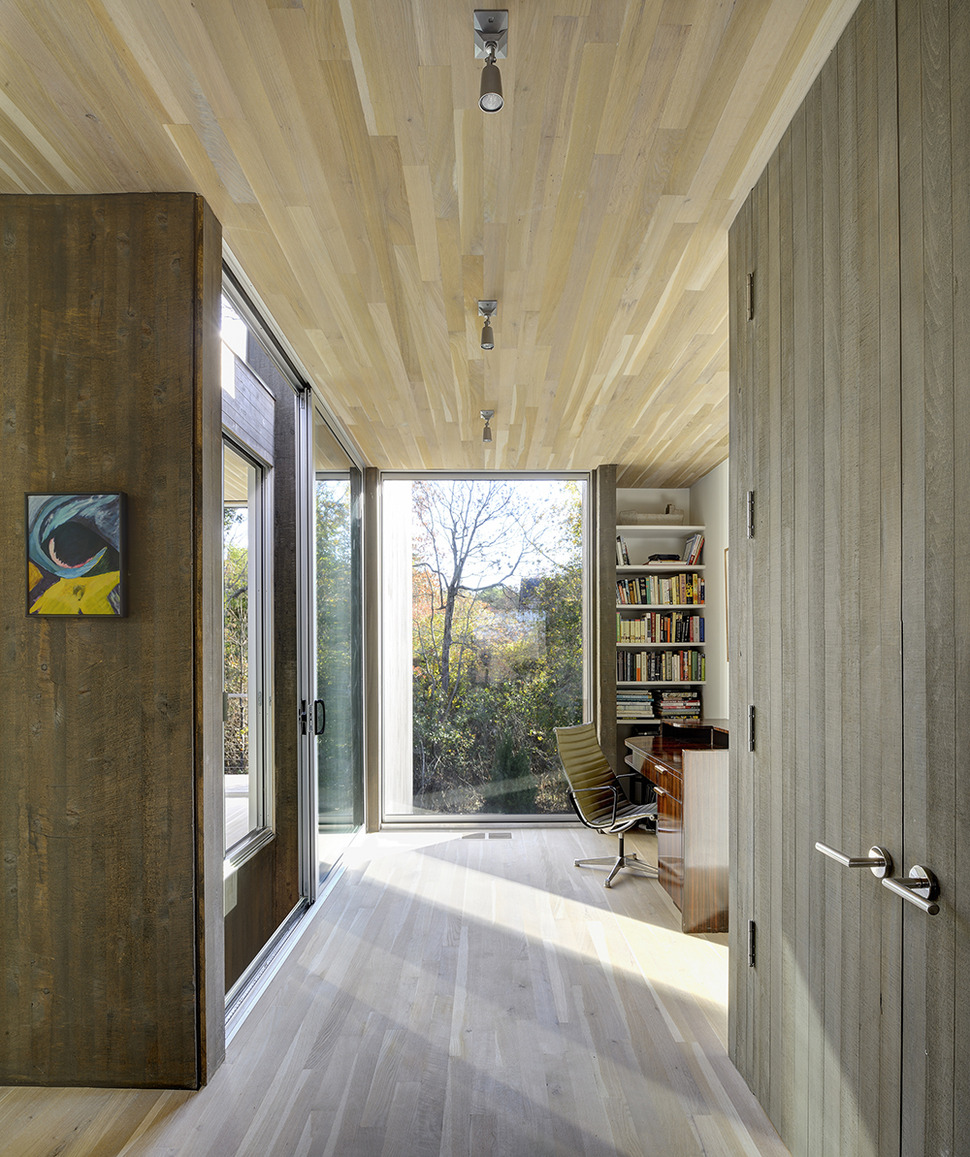
At the back of the home is where the private zone, including the home office, is located. While a place for study and work, it too has a sliding section of glazing – allowing for easy access to fresh air, natural sunlight and of course, the amazing views.
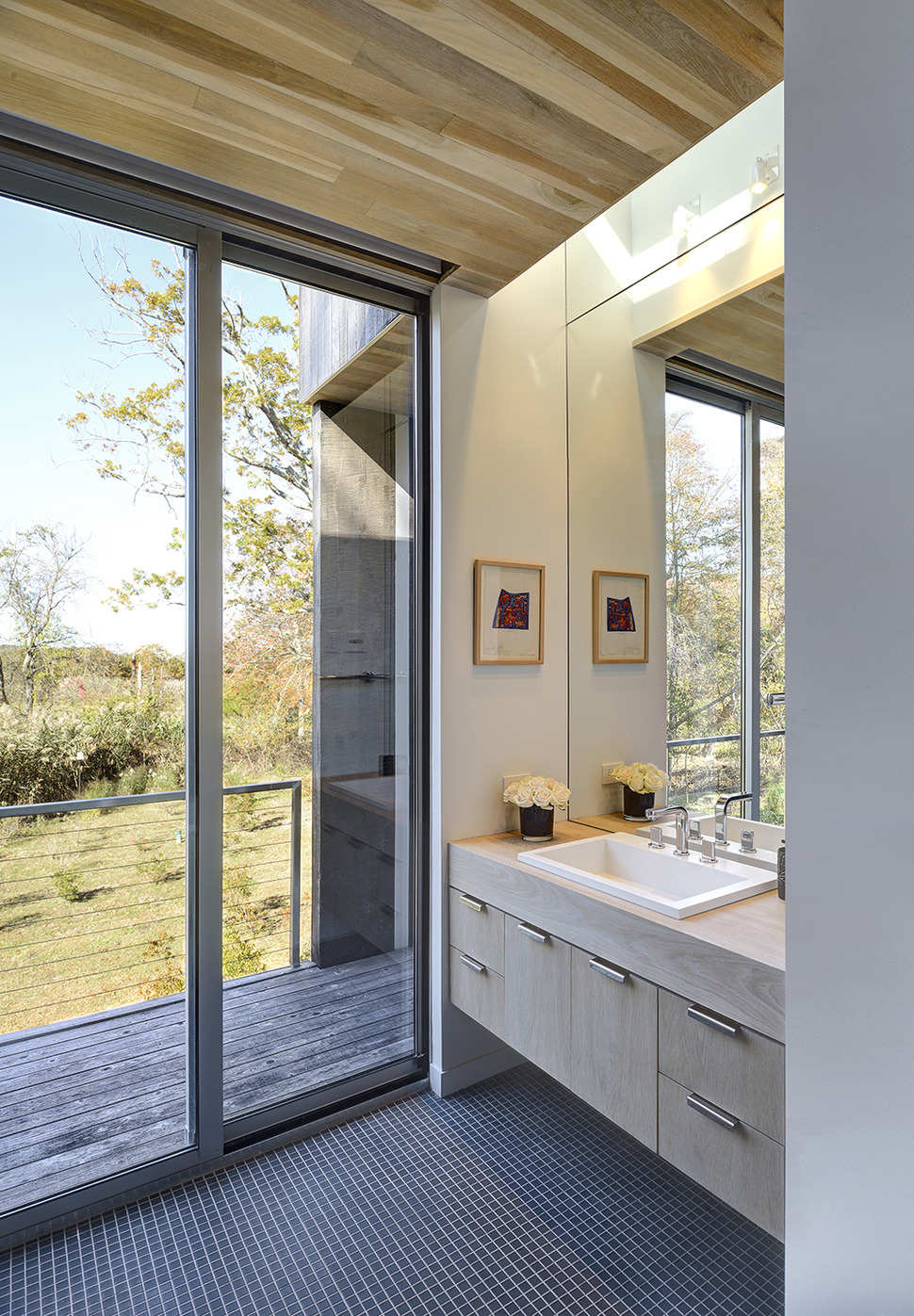
A bathroom is positioned between the office and the bedrooms – which have a modular planting system above them on the rooftop to reduce runoff.
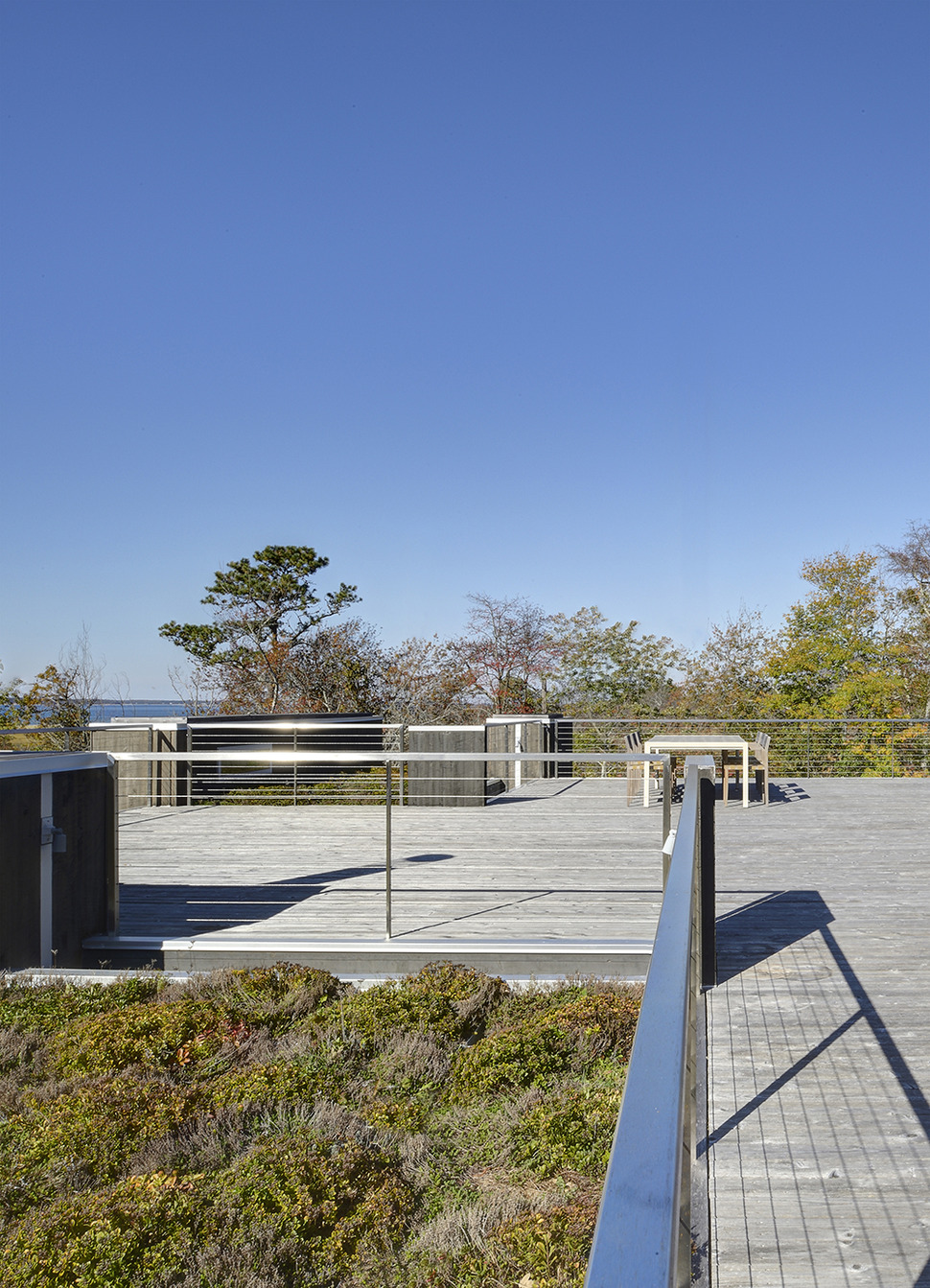
The rooftop is divided into different zones by the projecting piles – which just happen to incorporate photovoltaics that power geothermal pumps within them. The geothermal pumps sustainably utilize the natural abundance of high ground water to heat and cool the house in an eco-friendly manner. The piles also contain downspouts to conduct rainwater from the rooftop deck to the ground below, as well as a ventilation system that siphons air through the middle of the structure.
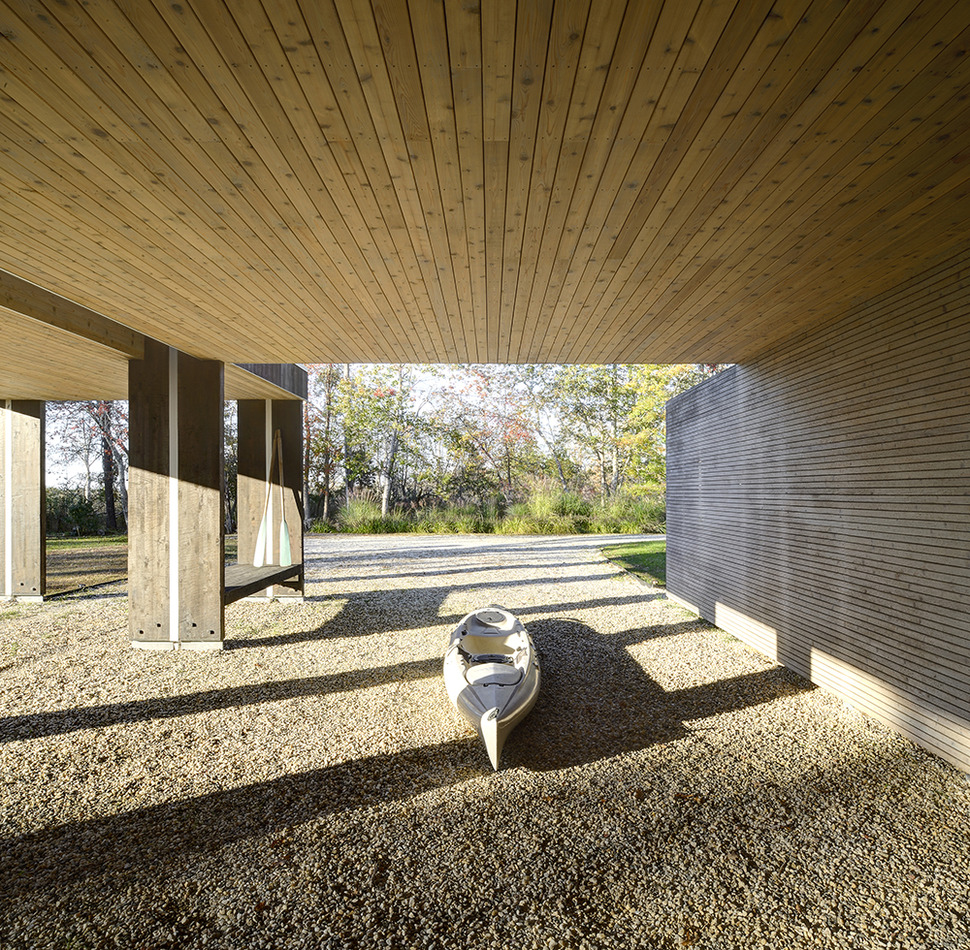
At the ground level, the architects created a large multi-zoned covered area divided into a carport and outdoor storage. By creating this space below the home, the exterior footprint of the structure was kept to a minimum.

While most waterfront construction use pilings to establish a base plane for homes to then be built on, the Northwest Harbor House uses the pilings as an integral part of the overall design. Here, the 16 exposed, glue-laminated piles stake out the enclosing walls for each of the 3 bedrooms and extend vertically all the way up to the rooftop deck. The spaces between the piles house such functions as closet, desk, laundry, pantry and a shower compartment.
Bates Masi + Architects
Photos supplied by Bates Masi + Architects
